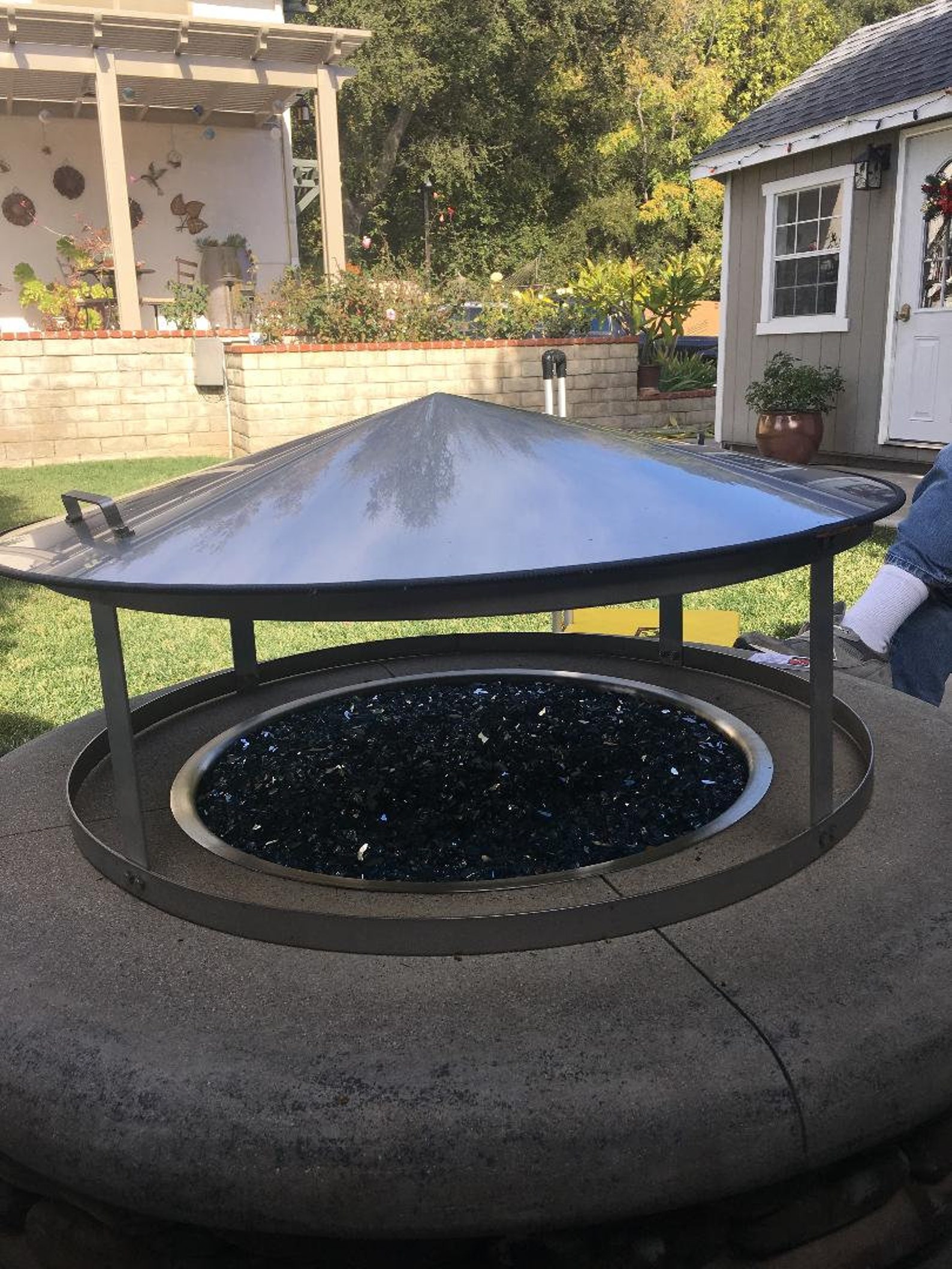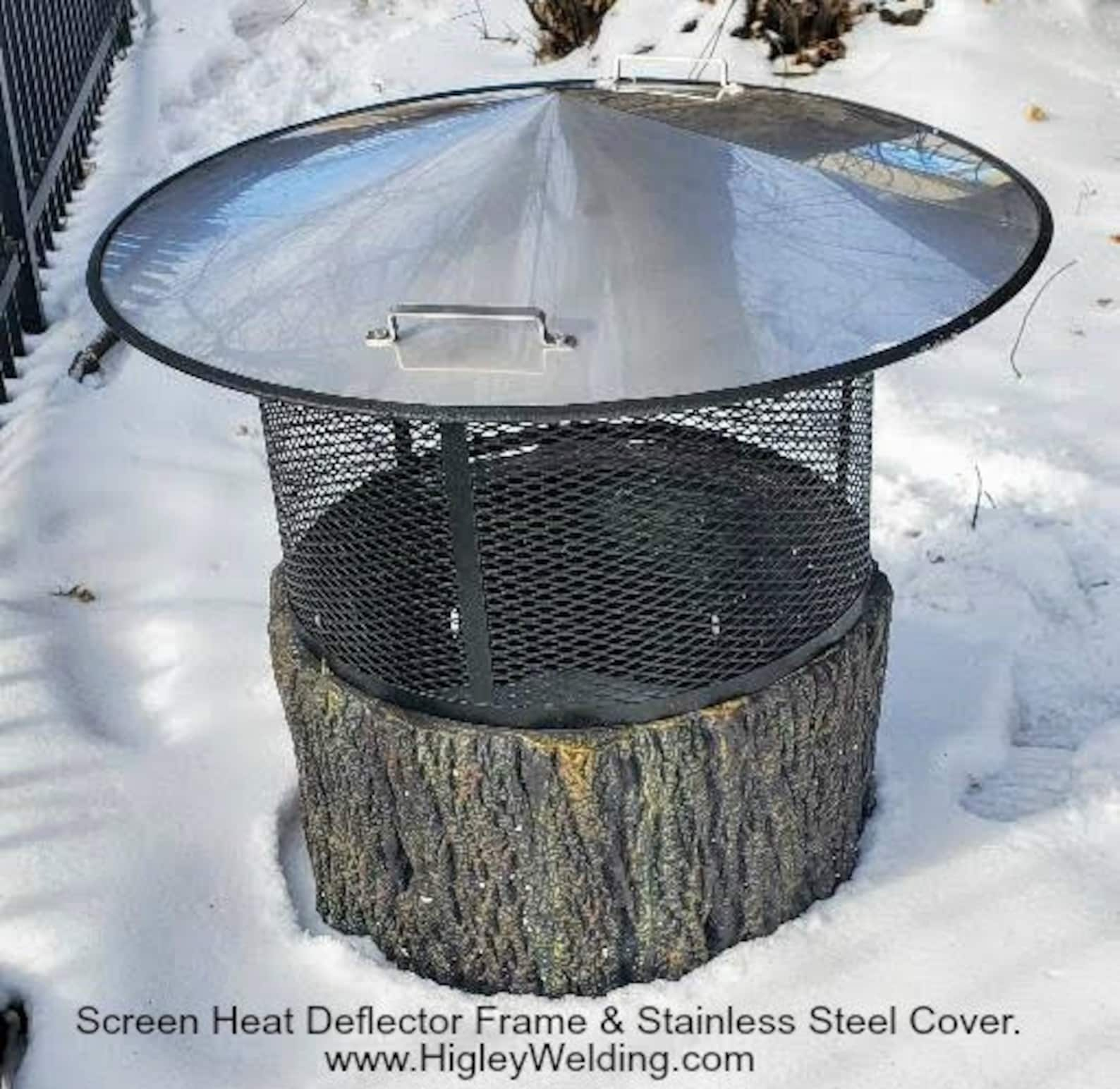
- FIRE PIT HEAT DEFLECTOR DIY HOW TO
- FIRE PIT HEAT DEFLECTOR DIY PLUS
- FIRE PIT HEAT DEFLECTOR DIY FREE
FIRE PIT HEAT DEFLECTOR DIY FREE
We're currently giving away free copies here.With all the talk about heat deflectors, I got impatient and DIYd it (pics below) all parts are from Home Depot and the total was <$115.

FIRE PIT HEAT DEFLECTOR DIY PLUS
You'll discover six key strategies to staying alive in the outdoors plus often-overlooked survival tips. Now you're ready to enjoy a great night around the campfire!īy the way, if you enjoyed this article then you'll love our survival mini guide. Wet or green (live) wood either burns very smoky or often does not burn at all.īuilding a fire pit in the wilderness is often a rewarding experience. Examples of hardwoods include oaks, maples, and cherries.
Wood Selection: Small branches from softwoods provide the best kindling for starting a fire, though once your fire is established, seasoned hardwoods will burn hotter and brighter with less smoke. Be sure to monitor wood being dried in this manner so that they do not catch on fire. Drying Wood: Wet wood can be stacked around your fire pit in an "eagle nest" shape. Coals cook food far more effectively than flame. Coals can be pulled into this spot to cook over, while your main fire can continue to burn providing light and warmth. Designate a cooking area within your fire pit: You can shape your fire ring to have a small bump out for cooking food. Heat reflectors can also be created by building a small wall out of stones or logs. Incorporate a Heat Reflector: You can utilize a natural feature such as a large rock or embankment as a "heat reflector" to keep heat from escaping your fire pit area and further protect the fire from wind. A stone fire pit also retains and radiates heat. Use stones to make a fire ring (this also helps protect and concentrate your fire) Caution: do not use rocks that have been submerged in water, as they can explode when heated. Dig a bowl-shaped depression that is three to eight inches deep at the center (this helps protect and concentrate coals, allowing your fire to burn bright and hot with less smoke). Determine the size of the pit based on your intended uses (Is the primary use creating light, keeping warm, or cooking food? How many people will be utilizing the fire?) A two-foot diameter is often sufficient for one to three people, 3-4 feet for larger groups. Keep a bucket of water or pile of dirt nearby to put out the fire. Build a fire pit on top of gravel, sand, or bare soil. Clear away any flammable debris (leaves, sticks, pine needles, etc…) for at least ten feet around the fire pit. Stay clear of overhanging branches and avoid tree roots in the ground that could catch fire. Also note any prevailing winds and select a location protected from the wind, to keep coals from being blown out of the fire pit. Select a flat spot away from trees, shrubs, dry grasses, and anything else that could burn. Safety Considerations When Building a Fire Pit Three important concepts are outlined below: 1. 
From keeping warm in cold weather to cooking food and providing light, proper fire pit construction is important to make the most of your outdoor experiences.
FIRE PIT HEAT DEFLECTOR DIY HOW TO
Understanding how to build a fire pit with safety and utility in mind is an important wilderness skill.






 0 kommentar(er)
0 kommentar(er)
